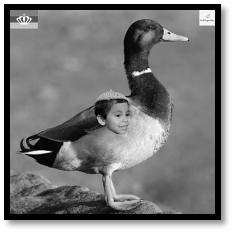A Dream, A Vision, A Nation Remembered

Before its ultimate dissolution, the nation once known as "The Lardish Republic" carried a more ambitious, and perhaps more idealistic, official name. This moniker, however, was not its original title, nor did it fully encapsulate the complex journey of its foundation and eventual demise. The story of this unique nation began with a bold vision shared by two brothers, Lard Lapudding and Tutita Col, in the pivotal year of 2020. They dreamed of establishing a truly democratic, free, and expansive country where every citizen could thrive. It was a lofty ambition that, for a time, took concrete form.
By 2021, their shared dream materialized with the official founding of the United States of the First Lardish Republic (USFLR). This newly formed nation established its capital in the bustling Central Lardish District, a strategically chosen location intended to be the heart of its burgeoning government and culture. Yet, despite the aspirational name suggesting a democratic union, the reality of its governance was far more intricate and, for some, contradictory. Tutita Col, the primary architect of the country's early structure, designed the USFLR not as a direct democracy, but as a constitutional monarchy. He took the throne as King, while his brother, Lard Lapudding, was appointed President. Crucially, the President's duties were largely symbolic; the true legislative authority and power resided within the Parliament. This initial structure, while an attempt at governance, carried the seeds of future discord.
This early arrangement led to significant introspection and, eventually, a growing sense of
disillusionment for Lard Lapudding. He often spoke passionately about the nation's founding principles,
contrasting them with what he perceived as a lack of genuine freedom and greatness in its initial
political structure. People shouldn’t put themselves in power just because they feel like it; the
people should be able to choose their representatives and leaders,
he powerfully expressed
during a
press conference in February 2022. This statement underscored his belief that the ultimate power should
always rest with the people, not with those who simply claimed it. It was a sentiment that would shape
the future trajectory of the Lardish Republic, ultimately leading to a shift that, while significant,
couldn't prevent its eventual dissolution.

Upon its establishment, the political system of the Lardish Republic was carefully constructed with a
clear hierarchy, though power was distributed in a nuanced way. Understanding this structure is key to
grasping the nation's early political landscape, a system that, in hindsight, proved to be a temporary
arrangement:
• The King: Primarily a symbolic figure, the King (Tutita Col) nonetheless held
significant
influence,
particularly when it came to formally passing legislation that had already been approved by both
chambers of Parliament. His assent was a crucial step in the law-making process.
• The Parliament: This was the true legislative powerhouse, divided into two distinct
chambers. The
lower
chamber was designed to be directly representative of the populace, with its members elected by
citizens
and allocated proportionally based on each state's population. In contrast, the upper
chamber
consisted
of members appointed by the various political parties, with their numbers reflecting the
representation
each party held in the lower chamber. This bicameral system aimed to balance popular will with party
influence.
• The President: Lard Lapudding's role as President in national politics was notably
limited. His
primary
responsibilities were confined to the appointment of certain Parliament members and accompanying the
King's cabinet on international diplomatic missions, serving more as a figurehead on the global
stage.
The political landscape of the Lardish Republic was not static, even if its existence was finite. In 2022, a significant shift began to take shape, spearheaded by President Lard Lapudding. He convened a crucial joint meeting within the Parliament, following which he submitted a groundbreaking proposal: to introduce the positions of a Vice-President and a Prime Minister, thereby expanding the country's executive power. In what was hailed as a historic moment of collaboration between the lower and upper chambers, the bill passed with resounding support. On March 2022, the President moved swiftly, appointing the first Vice-President and Prime Minister, setting the stage for future general elections to formalize these roles. By this point, President Lapudding had already embarked on a new endeavor: the creation of a powerful political party dedicated to advocating for a presidential republic. This new movement aimed to fundamentally alter the balance of power, shifting it towards a stronger presidency with direct popular mandate. From this pivotal moment, Lard Lapudding remained in power as President, consistently championing his vision for a truly representative and free nation, until the country's eventual and decisive dissolution. The story of the Lardish Republic, though concluded, offers valuable insights into the complexities of nation-building and the enduring pursuit of freedom.
Images used in order:
Left: Image of Hobblewraight, Lardish Tutitacol State
Right: Coat of arms of the USFLR, with the king's face centered.
